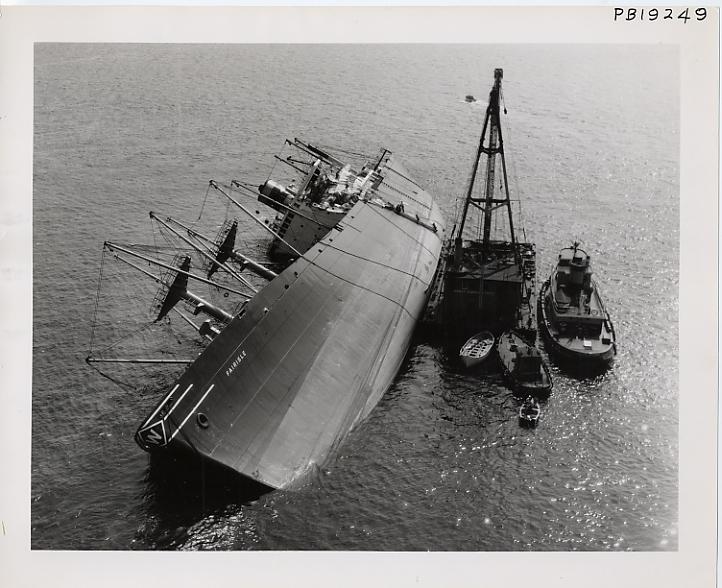Yesterday the news broke that Costa Cruises has decided that its wrecked liner Costa Concordia is to be refloated and hauled away to a different location to be dismantled. The ship, which currently rests on its side off the Italian coast, is massive, having carried 4,200 passengers and crew. If you’re like me, then you might be wondering how anyone would go about righting and moving such a massive vessel.
After searching the library’s catalog, I found some information about salvage operations and refloating ships. William I. Milwee, Jr.’s Modern Marine Salvage explores in detail the process of planning and successfully executing an operation of this magnitude. As Milwee states, “Refloating the wreck intact is the cleanest and often the cheapest and most certain method of wreck removal.”
However, there are still a mountain of calculations and analyses that go into a workable plan for righting and floating a vessel. Surveys need to be done of the soils or other materials upon which the ship rests, as well as of the condition of the ship itself. After these surveys, a righting method must be selected.
There are two main methods of righting a vessel. The first, parbuckling, involves using winch systems ashore or on well-anchored barges that apply horizontal force, pulling the ship upright. The second method uses lifting devices such as cranes or pontoons to apply vertical, rather than horizontal force upon the wreck. It is not yet clear which method will be used on the Costa Concordia, as the cruise company has yet to choose a salvage company for the job.

The job is not finished once the ship is righted, however. Because the liner has sustained such heavy damage, it will be a battle to keep Costa Concordia afloat during the transportation phase. Much like the transportation of battle damaged ships, salvagers will have to keep a close eye on the vessel until it is safely to port.
If you would like to learn more about the finer points of large vessel salvage and wreck removal, stop by and take a look at Milwee’s Modern Marine Salvage or any number of the resources available here at the Mariners’ Museum Library.